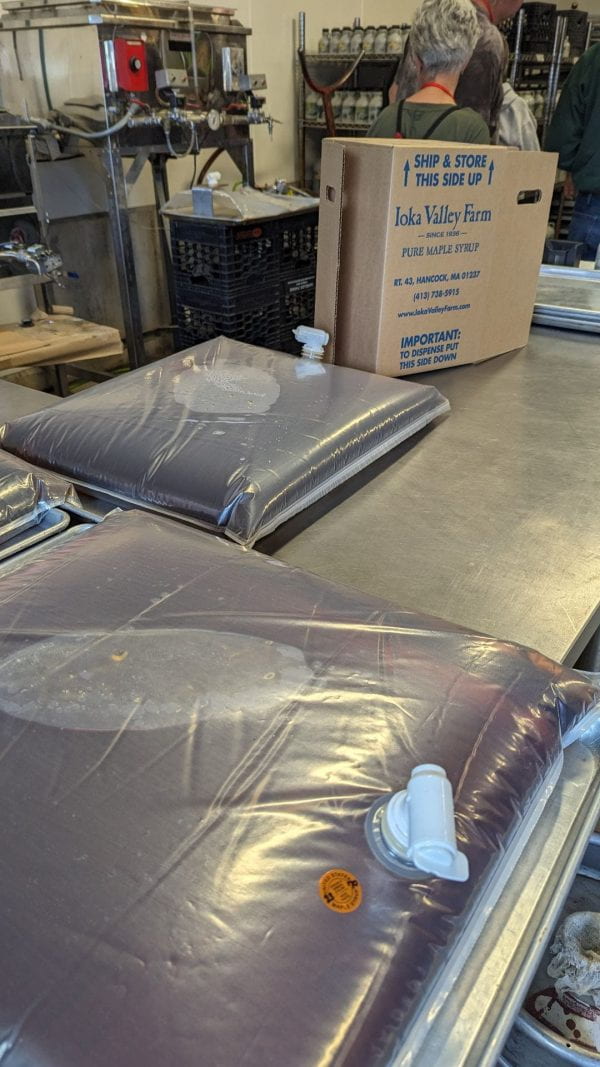Just about this time a month ago, I was in the middle of the North American Maple Syrup Council’s International Conference hosted in Sturbridge, Massachusetts. To take a deep dive into maple syrup for a few days, it felt appropriate to surrounded by maples showing off their fall color and driving through towns with “Established By” dates in the 1600 and 1700s.
Thursday was tour day, and attendees had two different itineraries to choose from. Although I had to miss out on the 3rd and 4th stops of the tour, the first 2 alone made the time worthwhile. Maple Corner Farm generously opened its doors to their state-of-the-art new sugarhouse and restaurant/cross-country skiing outpost – they are a living testament to how revenue diversification can support a robust business plan.
The second stop to Ioka Valley Farm was equally impressive as they are one, if not the, largest maple producer in the state of Massachusetts. The lunch they served up from their restaurant was excellent, and all the tour hosts were eager to answer questions and dialogue with anyone curious about their operations.
The early departure reason that cut my tour short was to be back for the maple specialists meeting that afternoon at 3 PM. Climate change and how to adapt under those pressures was the topic of discussion, a fruitful one at that. It is an honor to work alongside respected colleagues at other institutions to brainstorm research ideas that have practical why does it matter moxie. Of all the topics covered, sugarbush management received the most attention and votes of priority. What does that mean? Building a house that does not blow away or shift off its foundation as tree health, vigor, recruitment and distribution are stressed in the future – in short, resilience. Thursday was end capped with the Taste of Massachusetts banquet and great social exchanges between all who gathered.
Friday felt more like work as I was on the hook for a research presentation highlighting the last 3 years’ work on the red x silver maples and the single-tree canister work. 2-3 concurrent sessions carried the day, and dinner featured the maple contest awards, Hall of Fame inductee announcements, and more stimulating back-and-forth with fellow attendees.
If Friday’s presentations were more research focused, then Saturday’s talks could be characterized as more how-to and hands-on practical. The quality of presenters was evident throughout, and it’s hard – having now been to one – imagining not attending every single one of these events that my schedule will allow into the future.




